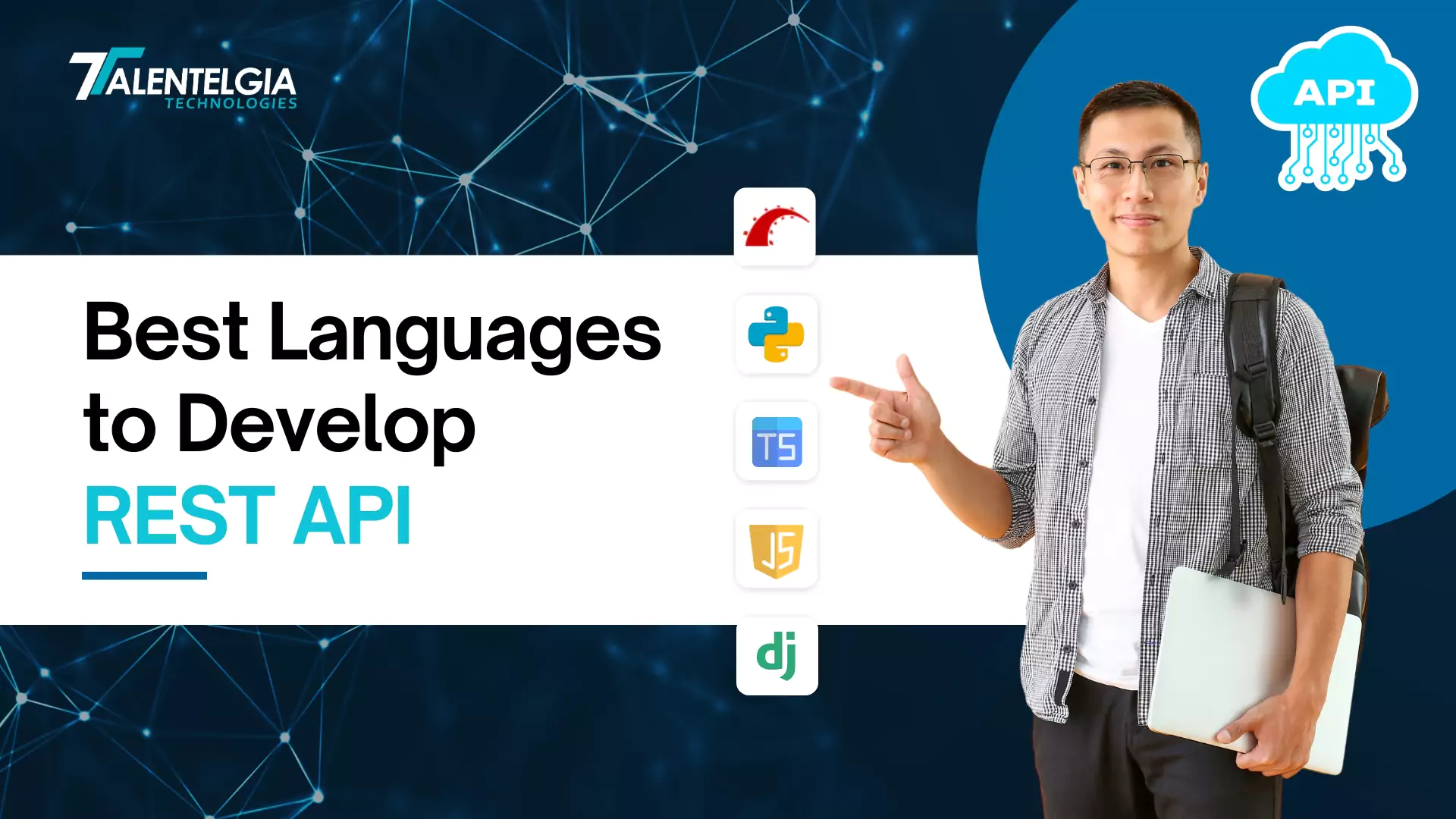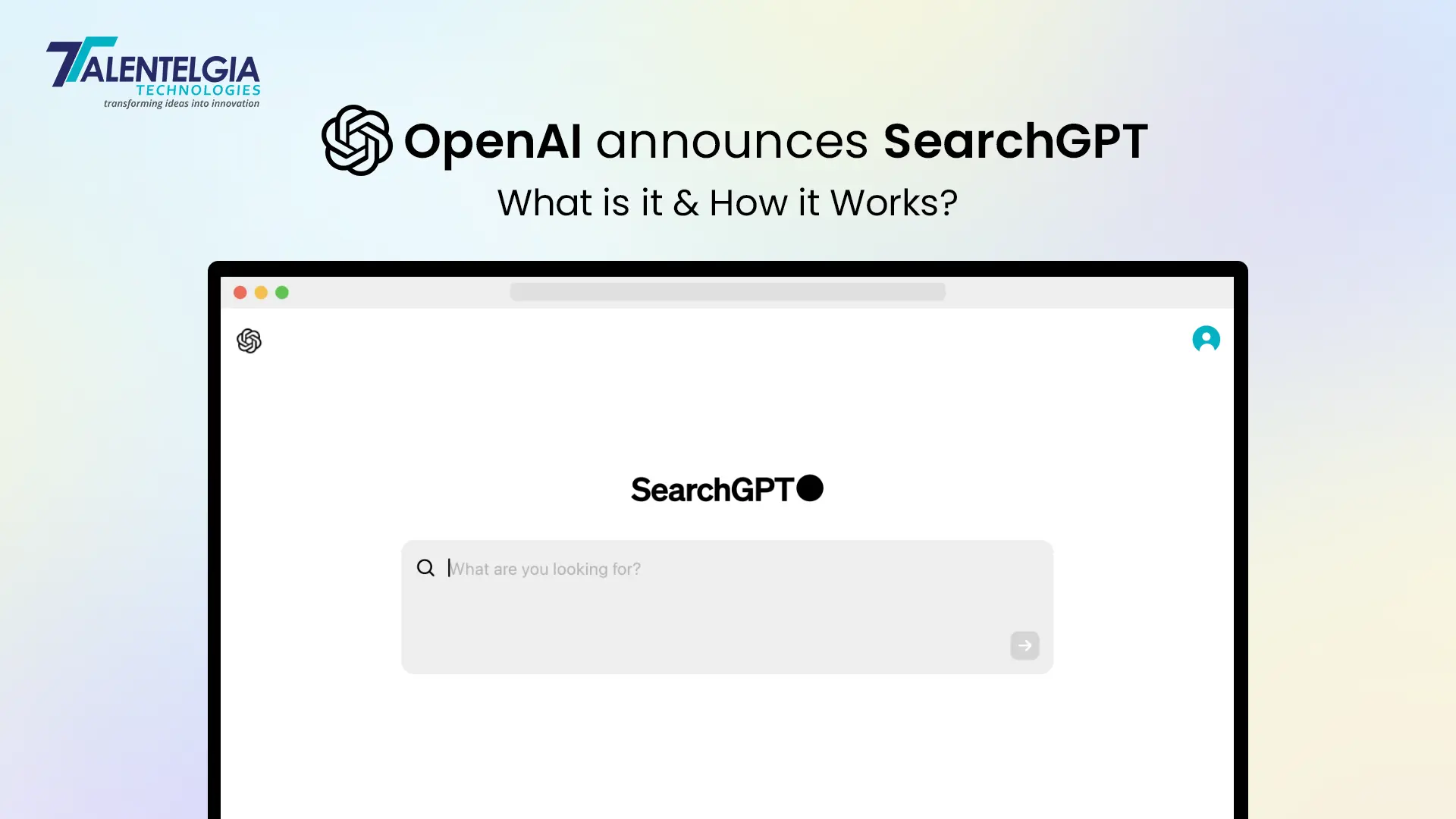REST APIs are essential for communication between various software and services. Further, the need for robust, efficient REST APIs continues to grow. So businesses strive to create connected, integrated digital experiences. However, the developers now have multiple programming languages to choose from when creating REST APIs. Each language has unique features and advantages to suit developers’ needs and preferences. After reading this blog, you will better understand the best languages to develop REST APIs for your needs and development goals.
What is a Rest API?
REST stands for Representational State and is an architecture used to create Web services. REST API uses HTTP or HTTPS to communicate with clients and servers. The server does not store any information about the requester.
This approach makes REST APIs more versatile and easier to manage than other types of APIs. URIs identify resources, and clients can interact with the resources by sending requests to the server. The server responds to the resource in a specific format, such as JSON or XML. You should also include the details of the request and the response. The content is usually JSON and XML.
Ruby on Rails
Ruby is often used with the Ruby on Rails framework and is a strong contender for REST API development. Rails accelerates development by providing a good environment with its compact configuration concept. Data Processing ORM makes interaction with the repository easy
Ruby’s elegant syntax increases the readability and maintainability of project code and supports effective collaboration between development teams. In addition, the Rails community provides many gems, which are functional libraries that extend functionality and enable rapid integration of projects. Rails’ emphasis on testing ensures that the API is robust and reliable. Therefore, Ruby on Rails is ideal for developers seeking rapid development without compromising scalability and performance..
Python
Python is widely used to create REST APIs due to its simplicity and readability. Django REST Framework (DRF) provides powerful tools for building APIs quickly and efficiently.
The Django REST framework provides a comprehensive approach to large-scale projects with focus, consistency, and usability tools. Python’s rich libraries, such as Marshmallow for handling HTTP requests and data serialization, enhance API development. FastAPI is another Python framework designed for high-performance APIs that supports asynchronous programming to process multiple requests efficiently.
Our Rest API’s! Our team of 150+ expert developers build high-
performing apps using REST API? Contact
us today for a free business analysis.

Python’s clean and concise syntax makes the codebase easy to maintain and extend. Community support and rich information provide developers with abundant resources. Python’s integration with data science and machine learning tools enables many aspects of API development. Overall, Python’s ease of use and powerful framework make it a good choice for REST API development.
TypeScript for REST API
TypeScript is a popular language for creating REST APIs due to its powerful types and modern JavaScript features. It is built on JavaScript and provides additional security to help catch errors early in the development process.
TypeScript’s static typing improves code readability and maintainability, allowing for greater team collaboration. Integration with modern development tools such as Visual Studio Code provides advanced features such as IntelliSense and regression support. TypeScript supports decorative objects and metadata, making it easier to create API methods and middleware. TypeScript’s compatibility with existing JavaScript libraries enables integration with a variety of tools and systems. Combining TypeScript with frameworks like NestJS can further enhance development by providing out-of-the-box applications and built-in support for dependency injection. Community support and comprehensive information make it easy to find resources and examples.
Overall, TypeScript improves development by providing a robust, manageable, and extensible way to create REST APIs.
Django REST
Django REST Framework (DRF) is a flexible tool used for building web APIs in Django. DRF integrates with Django’s ORM, allowing developers to quickly create APIs that interact with the database. It improves code reusability and control by providing powerful features for building complex APIs, including views, routers, and class views.
The framework includes a browsable API interface that makes it easy to test and interact with the API during development. DRF supports multiple authentication methods such as OAuth, token-based authentication, and session-based authentication. It also provides comprehensive pagination, filtering, and sorting options to support efficient processing of large files. The framework has extensive documentation and community support, making it suitable for both beginners and experienced developers. Additionally, DRF’s modular design can be easily integrated with third-party components and customized to the specific project. Overall, the Django REST framework enhances the functionality of Django, making it the best choice for building scalable and powerful RESTful APIs.
Javascript
JavaScript, especially Node.js, is widely used to build RESTful APIs due to its event-driven architecture and non-blocking I/O. Using frameworks like Express.js, developers can set up or upgrade API endpoints, and manage and process HTTP requests. data. The asynchronous nature of JavaScript allows concurrent requests to be processed, thus improving performance. Thanks to the vast ecosystem of npm packages, developers have access to a variety of middleware and utilities to build powerful APIs.
With Node.js, JavaScript can run asynchronously, making it ideal for I/O-intensive applications like APIs. This system simplifies routing, centralized integration, and application management, allowing developers to focus on business logic. This is especially useful for real-time applications and applications that require high compatibility. The event-driven nature of JavaScript combined with Node.js allows multiple requests to be processed simultaneously without blocking the thread.
JavaScript’s extensive ecosystem, including npm (Node Package Manager), also provides many templates and libraries for API development. The combination of JavaScript and Node.js provides an integrated and efficient environment for building robust and accessible RESTful APIs.
Conclusion
When it comes to building REST APIs in 2024, there are many options. Whether it's the simplicity and beauty of Python, the complexity of JavaScript and Node.js, the power of Ruby on Rails, or the powerful typing of TypeScript, developers have many tools to create powerful and efficient APIs. The final language choice depends on the requirements, design skills, and specific needs of the application. Some languages may excel in certain areas, such as rapid development or optimization, while others may prioritise scalability or maintainability. Therefore, developers need to carefully consider their options and choose a language that suits their project goals. As new languages and frameworks emerge, developers must constantly evaluate their suitability for REST API development and be willing to adapt to changing needs and preferences to create robust, scalable, and manageable REST APIs that power next-generation digital experiences.


 Healthcare App Development Services
Healthcare App Development Services
 Real Estate Web Development Services
Real Estate Web Development Services
 E-Commerce App Development Services
E-Commerce App Development Services E-Commerce Web Development Services
E-Commerce Web Development Services Blockchain E-commerce Development Company
Blockchain E-commerce Development Company
 Fintech App Development Services
Fintech App Development Services Fintech Web Development
Fintech Web Development Blockchain Fintech Development Company
Blockchain Fintech Development Company
 E-Learning App Development Services
E-Learning App Development Services
 Restaurant App Development Company
Restaurant App Development Company
 Mobile Game Development Company
Mobile Game Development Company
 Travel App Development Company
Travel App Development Company
 Automotive Web Design
Automotive Web Design
 AI Traffic Management System
AI Traffic Management System
 AI Inventory Management Software
AI Inventory Management Software
 AI Software Development
AI Software Development  AI Development Company
AI Development Company  AI App Development Services
AI App Development Services  ChatGPT integration services
ChatGPT integration services  AI Integration Services
AI Integration Services  Generative AI Development Services
Generative AI Development Services  Natural Language Processing Company
Natural Language Processing Company Machine Learning Development
Machine Learning Development  Machine learning consulting services
Machine learning consulting services  Blockchain Development
Blockchain Development  Blockchain Software Development
Blockchain Software Development  Smart Contract Development Company
Smart Contract Development Company  NFT Marketplace Development Services
NFT Marketplace Development Services  Asset Tokenization Company
Asset Tokenization Company DeFi Wallet Development Company
DeFi Wallet Development Company Mobile App Development
Mobile App Development  IOS App Development
IOS App Development  Android App Development
Android App Development  Cross-Platform App Development
Cross-Platform App Development  Augmented Reality (AR) App Development
Augmented Reality (AR) App Development  Virtual Reality (VR) App Development
Virtual Reality (VR) App Development  Web App Development
Web App Development  SaaS App Development
SaaS App Development Flutter
Flutter  React Native
React Native  Swift (IOS)
Swift (IOS)  Kotlin (Android)
Kotlin (Android)  Mean Stack Development
Mean Stack Development  AngularJS Development
AngularJS Development  MongoDB Development
MongoDB Development  Nodejs Development
Nodejs Development  Database Development
Database Development Ruby on Rails Development
Ruby on Rails Development Expressjs Development
Expressjs Development  Full Stack Development
Full Stack Development  Web Development Services
Web Development Services  Laravel Development
Laravel Development  LAMP Development
LAMP Development  Custom PHP Development
Custom PHP Development  .Net Development
.Net Development  User Experience Design Services
User Experience Design Services  User Interface Design Services
User Interface Design Services  Automated Testing
Automated Testing  Manual Testing
Manual Testing  Digital Marketing Services
Digital Marketing Services 
 Ride-Sharing And Taxi Services
Ride-Sharing And Taxi Services Food Delivery Services
Food Delivery Services Grocery Delivery Services
Grocery Delivery Services Transportation And Logistics
Transportation And Logistics Car Wash App
Car Wash App Home Services App
Home Services App ERP Development Services
ERP Development Services CMS Development Services
CMS Development Services LMS Development
LMS Development CRM Development
CRM Development DevOps Development Services
DevOps Development Services AI Business Solutions
AI Business Solutions AI Cloud Solutions
AI Cloud Solutions AI Chatbot Development
AI Chatbot Development API Development
API Development Blockchain Product Development
Blockchain Product Development Cryptocurrency Wallet Development
Cryptocurrency Wallet Development About Talentelgia
About Talentelgia  Our Team
Our Team  Our Culture
Our Culture 
 Healthcare App Development Services
Healthcare App Development Services Real Estate Web Development Services
Real Estate Web Development Services E-Commerce App Development Services
E-Commerce App Development Services E-Commerce Web Development Services
E-Commerce Web Development Services Blockchain E-commerce
Development Company
Blockchain E-commerce
Development Company Fintech App Development Services
Fintech App Development Services Finance Web Development
Finance Web Development Blockchain Fintech
Development Company
Blockchain Fintech
Development Company E-Learning App Development Services
E-Learning App Development Services Restaurant App Development Company
Restaurant App Development Company Mobile Game Development Company
Mobile Game Development Company Travel App Development Company
Travel App Development Company Automotive Web Design
Automotive Web Design AI Traffic Management System
AI Traffic Management System AI Inventory Management Software
AI Inventory Management Software AI Software Development
AI Software Development AI Development Company
AI Development Company ChatGPT integration services
ChatGPT integration services AI Integration Services
AI Integration Services Machine Learning Development
Machine Learning Development Machine learning consulting services
Machine learning consulting services Blockchain Development
Blockchain Development Blockchain Software Development
Blockchain Software Development Smart contract development company
Smart contract development company NFT marketplace development services
NFT marketplace development services IOS App Development
IOS App Development Android App Development
Android App Development Cross-Platform App Development
Cross-Platform App Development Augmented Reality (AR) App
Development
Augmented Reality (AR) App
Development Virtual Reality (VR) App Development
Virtual Reality (VR) App Development Web App Development
Web App Development Flutter
Flutter React
Native
React
Native Swift
(IOS)
Swift
(IOS) Kotlin (Android)
Kotlin (Android) MEAN Stack Development
MEAN Stack Development AngularJS Development
AngularJS Development MongoDB Development
MongoDB Development Nodejs Development
Nodejs Development Database development services
Database development services Ruby on Rails Development services
Ruby on Rails Development services Expressjs Development
Expressjs Development Full Stack Development
Full Stack Development Web Development Services
Web Development Services Laravel Development
Laravel Development LAMP
Development
LAMP
Development Custom PHP Development
Custom PHP Development User Experience Design Services
User Experience Design Services User Interface Design Services
User Interface Design Services Automated Testing
Automated Testing Manual
Testing
Manual
Testing About Talentelgia
About Talentelgia Our Team
Our Team Our Culture
Our Culture


















 Write us on:
Write us on:  Business queries:
Business queries:  HR:
HR: 




